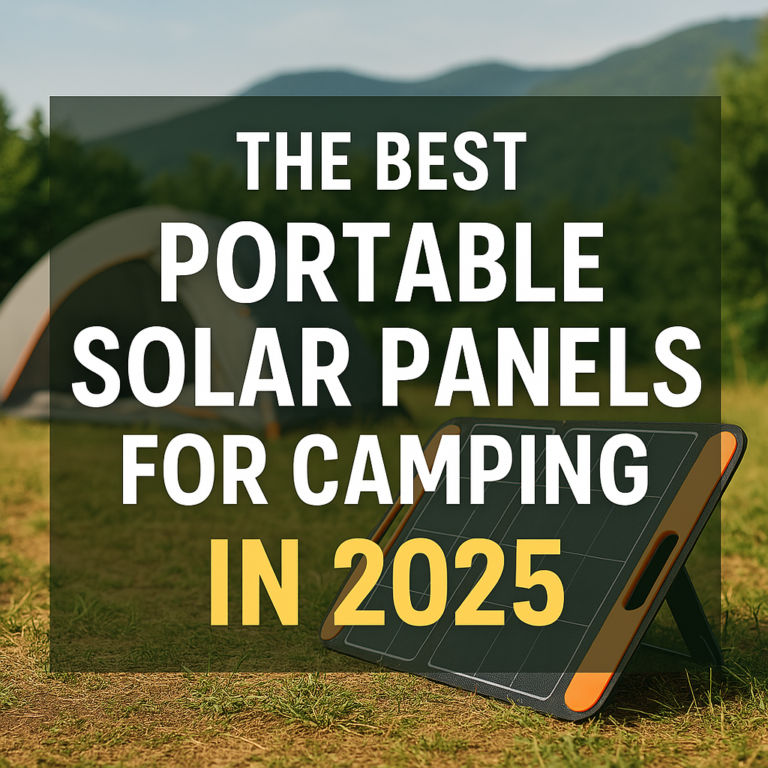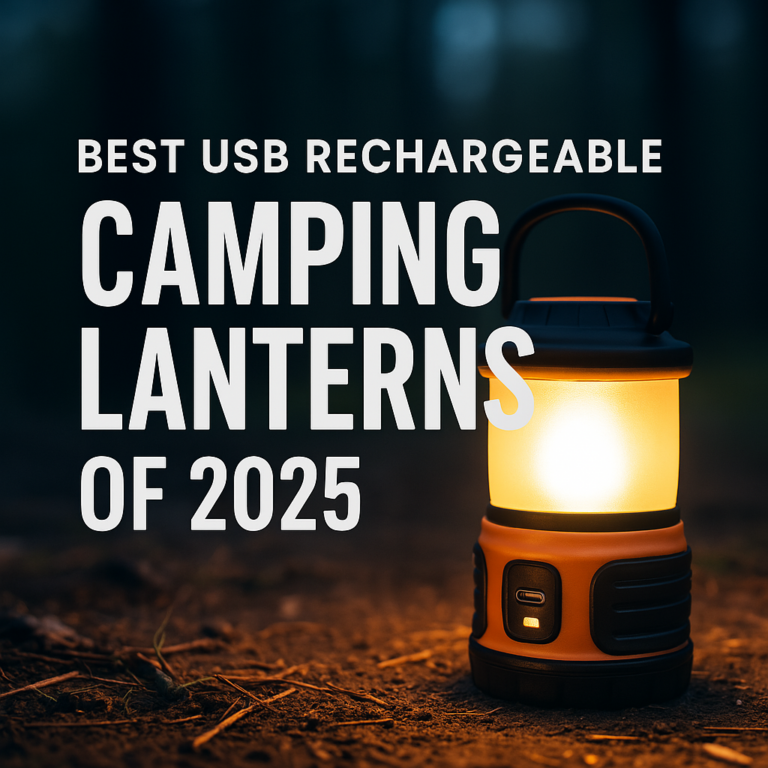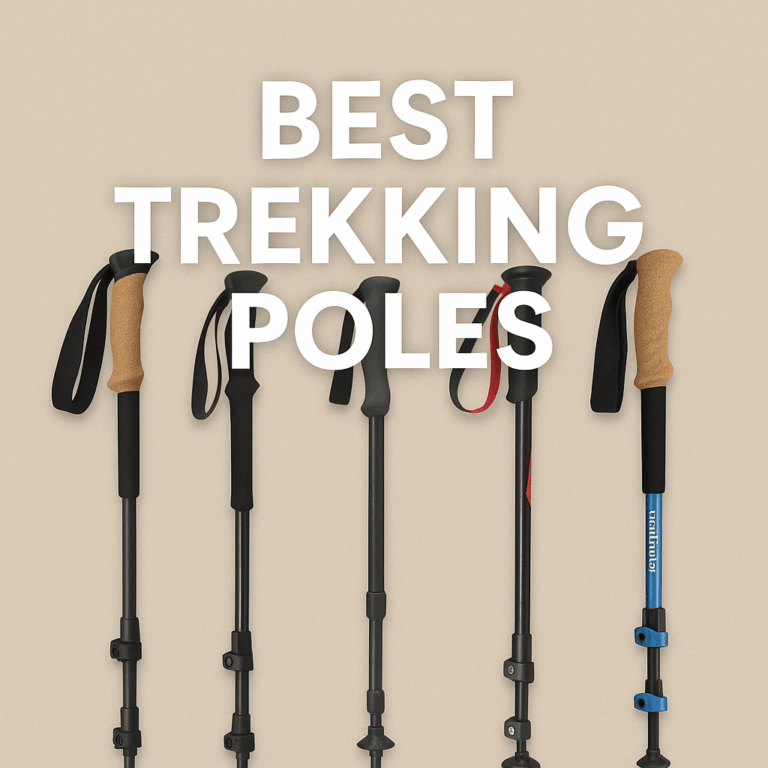Smart Camping Cookware: Is It Worth the Investment?
Introduction
I still laugh when I remember my first “serious” camping trip. I showed up with my regular kitchen pots, a cheap plastic spatula, and absolutely zero clue what I was doing. By the end of that weekend, I had a burned dinner, a melted spatula, and a new appreciation for proper camping gear!
Smart camping cookware has completely transformed how we cook in the outdoors. Gone are the days of lugging heavy, inefficient pots and pans that cook unevenly and take forever to heat up. Today’s camping cookware combines clever design, advanced materials, and innovative technology to solve real problems that campers face. For more innovative options, check out our guide on the best camping technology gadgets of 2025.
The evolution of camping cookware has been nothing short of revolutionary. From simple aluminum pots to integrated cooking systems with heat exchangers, nesting components, and multi-functional designs, we’re now able to cook better meals with less fuel and less frustration than ever before.
For anyone who enjoys spending time in nature, smart cookware represents one of the best investments you can make in your gear collection. The weight savings, improved efficiency, and enhanced durability mean more enjoyable meal times with less hassle — and who doesn’t want that after a long day on the trail?
What makes camping cookware truly “smart” isn’t just fancy features or high-tech materials. It’s thoughtful engineering that addresses the unique challenges of outdoor cooking. Whether you’re a weekend car camper or a dedicated thru-hiker, there’s a smart cookware solution that will significantly improve your camping experience.
In this guide, I’ll share what I’ve learned through years of trial and error, countless meals cooked in all sorts of conditions, and yes, more than a few spectacular cooking disasters along the way. From essential components to top brands, material considerations to practical cooking tips, we’ll cover everything you need to know to make smart decisions about your camp kitchen setup.
What Makes Camping Cookware “Smart”?
Let me tell ya, the term “smart cookware” used to make me roll my eyes. I thought it was just another marketing gimmick to get me to spend more money on gear I didn’t need. Boy, was I wrong about that one!
About five years ago, I invested in my first piece of smart camping cookware after a disastrous trip to the Cascades where my traditional pot set managed to both scorch my chili and somehow stay cold in the middle. Talk about a camping fail! I was cold, hungry, and pretty darn grumpy that night.
Smart camping cookware isn’t just about fancy gadgets or unnecessarily complicated designs. It’s actually about thoughtful engineering that solves real problems we face in the backcountry. The best smart camping cookware systems combine multiple functions while reducing weight and space—the holy grail for any serious camper or backpacker.
The biggest game-changer for me has been heat distribution technology. Many smart cookware sets now use aluminum cores wrapped in stainless steel or special heat-conducting bases that prevent those annoying hot spots. My current pot heats so evenly that I haven’t burned a single camp meal in three seasons. Seriously, that’s a record for me!
Another key feature is nesting capability. Good smart cookware is designed to fit together like puzzle pieces. My current set includes two pots, a frying pan, two mugs, and even a small strainer—all taking up the same space as my old single pot. The weight savings aren’t half bad either, usually coming in at 25-40% lighter than traditional sets of similar capacity.
Temperature-responsive handles might sound like overkill, but trust me, they’re not. I’ve got the burn scars to prove why they matter! Modern smart handles either stay cool or change color to warn you when they’re too hot to touch. No more using my t-shirt as an impromptu potholder and ending up with singed cotton.
Fuel efficiency is where smart cookware really saves your bacon, literally and figuratively. Many systems now incorporate heat exchangers—those fin-looking things on the bottom of pots—that can reduce fuel consumption by up to 30%. When you’re 4 days into a 7-day trip and worrying about running out of fuel, that efficiency isn’t just convenient—it’s essential.
Some of the highest-end smart cookware even includes integrated cooking systems with specialized burners that pair perfectly with their pots. These systems boil water in half the time with half the fuel, which is pretty darn impressive when you’re exhausted after hiking 15 miles.
The materials matter too. Most smart cookware uses advanced alloys or anodized aluminum that’s significantly stronger than traditional materials while weighing substantially less. My old aluminum pots would dent if I looked at them wrong, but my current titanium-strengthened set has survived being dropped onto rocks multiple times without even a scratch.
Is smart camping cookware worth the investment? In my experience, absolutely. The initial price gave me serious sticker shock—I’m not gonna lie about that. But five years later, I’ve saved enough on fuel and replacement costs for damaged traditional cookware that it’s more than paid for itself.
Just don’t make the mistake I did and go for the cheapest option with “smart” in the description. There are plenty of knockoffs that claim to have the same features but fall apart after a few uses. Learn from my wallet’s pain and research actual user reviews before buying!
Smart camping cookware has honestly transformed my outdoor cooking experience from a frustrating chore to something I actually look forward to. That’s worth every penny in my book.
Essential Smart Camping Cookware Components
I’ll never forget the time I tried to cook a decent meal for my hiking buddies with just a basic pot and portable stove. What a disaster! The pasta stuck to the bottom while the top remained crunchy, and don’t even get me started on the cleanup afterward. That experience sent me on a quest to build the perfect smart camping cookware system.
After years of trial and error (and quite a few wasted dollars), I’ve figured out which components are actually worth their weight in your pack. And trust me, when you’re ten miles into the backcountry, every ounce matters.
The foundation of any smart cookware system has to be a quality multi-pot set. Look for anodized aluminum with copper or titanium elements in the base. My current set weighs just 14 ounces but conducts heat better than my kitchen pots at home. The key is finding pots with graduated sizes that nest together perfectly. Mine includes a 1.5-liter main pot and a 0.75-liter smaller pot that doubles as a bowl.
Heat-exchange technology is absolutely non-negotiable if you’re serious about efficient cooking. Those funny-looking fins on the bottom of smart pots? They increase the surface area touching the flame by nearly 30%. What this means in real life is that I can boil water in about 2 minutes and use way less fuel. On a week-long trip last summer, I used just one small canister while my friend with traditional cookware went through three!
Lids are where many campers go wrong. A proper smart cookware system needs multi-functional lids. Mine converts to a strainer, cutting board, and even a shallow frying pan in a pinch. Yes, it cost more than a basic lid, but being able to strain pasta without dumping half of it into the dirt? Priceless.
Temperature-responsive handles have saved my fingers countless times. My favorite set has silicone-coated handles that stay cool enough to touch even when the pot is boiling. Some of the higher-end options actually change color based on temperature – pretty slick when you’re trying to cook in the dark!
A packable utensil set is something I initially overlooked. Big mistake! After trying to flip pancakes with a pocket knife (and ending up with scrambled pancake), I invested in a collapsible spatula, serving spoon, and ladle set. They nest together and weigh less than 4 ounces total. Game changer for actual cooking versus just rehydrating freeze-dried meals.
Integrated ignition systems might seem like a luxury until you’re trying to light a stove in windy conditions. My cookware system has a pressure-regulated stove with piezo ignition that works first time, every time. Haven’t used a match in three years of camping, which feels kinda magical.
Smart measurement markings etched directly into the pot walls have saved me from countless cooking fails. No more guesstimating how much water to add to rice! The markings on my pots show measurements for water, rice, pasta, and even common freeze-dried meal preparations.
The final component that truly makes a cookware system “smart” is how it all comes together. My entire kitchen setup—including stove, fuel, two pots, lid, cup, and utensils—packs down to the size of a large coffee mug and weighs less than 1.5 pounds. Everything has at least two purposes, and there’s zero wasted space.
Is quality smart cookware expensive? Yeah, it can be. But I’ve actually saved money by investing once in a well-designed system rather than repeatedly replacing cheap gear that breaks or performs poorly. Plus, the fuel efficiency alone has probably paid for the equipment over time.
The best advice I can give is to think carefully about how you actually cook while camping. If you’re a “boil water and add it to a pouch” kind of camper, you need different components than someone who enjoys preparing more complex meals. There’s no one-size-fits-all solution, despite what some manufacturers might claim.
Top Smart Camping Cookware Brands and Sets
I’ve literally gone through dozens of cookware sets over my years of camping, and man, what a difference the right gear makes! After that disastrous trip where my cheap pot melted partially onto my stove (yep, that happened), I decided to get serious about finding the best smart cookware out there.
When it comes to top-tier smart camping cookware, MSR’s lineup is tough to beat. Their Ceramic 2-Pot Set changed my wilderness cooking game completely. The ceramic-coated aluminum heats super evenly, and nothing—I mean nothing—sticks to it. I was skeptical about ceramic holding up on rugged trips, but after dragging it through three seasons of backcountry abuse, it’s still performing like new. The set weighs just under 1 pound and includes two pots that nest perfectly with room for a small stove inside.
Snow Peak is another brand that’s worth every penny, though I had to save up for months to afford their titanium multi-compact cookset. Japanese engineering at its finest! What makes their stuff “smart” isn’t flashy tech, but the incredible attention to detail. Their handles lock in multiple positions and stay cool enough to touch even over roaring flames. The titanium construction means the entire 4-piece set weighs less than my old single aluminum pot. It’s pricey at around $110, but I’ve had mine for seven years of hard use with zero issues.
Jetboil’s systems take integrated cooking to another level. I resisted the hype for years thinking they were just overpriced one-trick ponies. I couldn’t have been more wrong! The Genesis Basecamp System combines a regulated dual-burner stove with specially designed pots that connect directly to the heat source. The heat transfer efficiency is honestly mind-blowing—I’ve boiled water in 90 seconds in frigid conditions. Their FluxRing heat exchanger technology reduces fuel consumption by almost 40% compared to my old setup.
For budget-conscious campers, GSI Outdoors offers some surprisingly solid options. Their Pinnacle Camper Cookset isn’t the lightest option (about 3.5 pounds), but it’s practically a complete kitchen that somehow packs into a surprisingly small package. The color-coded mugs and bowls are a nice touch when you’re cooking for a group. I’ve found their non-stick coating isn’t quite as durable as premium brands, but at half the price, I can’t complain too much.
Sea to Summit deserves a mention for their X-Pot collection. These silicone pots with aluminum bases collapse down to practically nothing. I was totally skeptical about silicone sides holding up over heat, but after using them for a half dozen trips, I’m a convert. They pack down to less than an inch high, which is crazy convenient. They’re not great for high-temperature cooking like searing, but for boiling and simmering, they’re perfect.
TOAKS makes some of the best titanium cookware I’ve tested. Their pot-pan combos are minimalist in the best way possible. No unnecessary features, just perfectly designed, ultralight equipment that lasts forever. The 1100ml pot with pan lid has been my go-to for solo trips for years. The weight savings are significant—my complete TOAKS kitchen setup is under 8 ounces.
For true innovation, BioLite’s CampStove bundle represents the future of smart cookware. The stove literally charges your devices while you cook using thermoelectric technology. I was convinced it was just a gimmicky concept until I tried it on a week-long trip. Being able to charge my phone while making breakfast felt like camping in the future. The included KettlePot has precision pour spouts and a heat shield that improves efficiency by about 30%. For more innovative camping tech like this, check out our comprehensive guide to the best camping gadgets of 2025.
Primus’s PrimeTech Stove Set flies under the radar but shouldn’t. Their heat exchanger technology and regulated valve system means consistent cooking even when the fuel canister gets low or the temperature drops. I’ve had other stoves sputter out in cold weather, but my PrimeTech keeps purring along even in near-freezing conditions. The anodized aluminum pots with ceramic reinforcement have survived countless trips without a single scratch.
Just don’t make the same mistake I did by mixing and matching components from different systems thinking you’ll create some kind of super-setup. The best performance comes from using components designed to work together. I learned this lesson the expensive way when I tried to use a high-output stove with a pot that couldn’t handle the heat distribution.
When you’re shopping for smart cookware, focus on the cooking you actually do, not aspirational trail gourmet fantasies. If you’re honest about your needs, you’ll end up with a system that makes your camping experience significantly better without carrying a bunch of gear you never use.
Tech-Enhanced Camping Cookware Features
Camping cookware has gotten so much better! I used to hate cooking at my campsite. Now it’s actually fun.
The new temperature sensors built into pot handles are amazing. My cookware connects to my phone and tells me when food is about to burn. No more ruined dinners! This has saved me so many times when I get busy setting up camp.
Heat exchange technology makes a huge difference. My pots have these special fins on the bottom that grab more heat from the flame. Water boils twice as fast, and I use way less fuel. On my last trip, one small fuel can lasted all week!
Some cookware can now make electricity while you cook. My stove charges my headlamp and phone while I make dinner. It’s two camp tasks in one! I don’t need to pack separate chargers anymore.
The materials are so much lighter and stronger now. My new titanium-ceramic pots weigh almost nothing but can take a beating. I accidentally dropped one on rocks last summer, and it didn’t even dent.
Auto-stirring features are perfect for camp cooking. My pot has a small battery paddle that stirs slowly while I do other things. Now I can set up my tent while my dinner cooks itself!
Folding cookware saves tons of space. My pots squish down flat when not in use. They pop back up solid when it’s time to cook. I was worried they might leak, but they’ve been totally reliable.
Mix-and-match systems are super handy. All the pieces in my cookset work together. Handles move between pots, lids become pans, and everything nests together neatly.
The heat control is so much better than before. My stove system adjusts from super low to full blast easily. I can make real meals that need careful temperature control, not just boil water.
Easy-clean surfaces make a huge difference at camp. My pots have a special coating that food doesn’t stick to. Most meals clean up with just a quick wipe and almost no water.
Yes, tech cookware costs more upfront. But I’ve saved money by not replacing cheap gear that breaks. Plus I use less fuel, which adds up fast if you camp often.
Just test any new cookware before taking it deep into the wilderness. You want to make sure all those cool features work properly before relying on them miles from home!
Materials and Durability Considerations
Choosing the right camping cookware materials can make or break your trip. I learned this lesson the hard way on a rainy weekend in the mountains when my cheap aluminum pot developed a crack on day one!
Titanium is my go-to material for serious backpacking. It’s incredibly lightweight and nearly indestructible. My titanium pot has survived being dropped on rocks, packed under heavy gear, and even accidentally left on a flame too long. The downside? It conducts heat unevenly and can create hot spots. I’ve burned more than a few meals before figuring out the trick of frequent stirring and lower heat.
Anodized aluminum offers the perfect middle ground for most campers. It weighs a bit more than titanium but distributes heat much better. The anodization process creates a hard surface that resists scratches and makes cleaning easier. My anodized set has lasted five years of heavy use and still looks decent. Just don’t use metal utensils on it – I scratched my first set beyond recognition that way.
Stainless steel is practically bulletproof but heavy as heck. If you’re car camping or don’t mind the weight, stainless is amazing for durability. It won’t dent, crack, or warp even under rough conditions. My stainless Dutch oven has been through literal fire and still performs perfectly. The heat distribution is excellent too, making it easier to cook real meals without burning.
Silicone components have gotten so much better recently. The collapsible bowls and cups I bought three years ago are still going strong despite being crushed in my pack countless times. The key is getting pure silicone, not cheaper plastic blends that crack in cold weather. I made that mistake once – never again!
Handle attachments are usually the first failure point on camping cookware. Look for handles that detach completely or fold securely. The spot welds that connect handles to pots take a beating over time. My current set has replaceable handles that lock into place with a simple twist mechanism. Brilliant design that’s survived dozens of trips.
Coating durability varies wildly between brands. Some non-stick coatings start flaking off after just a few uses, while others last for years. I’ve had the best luck with ceramic-reinforced coatings that don’t use PTFE. They don’t work quite as well as Teflon initially, but they last way longer in tough conditions and don’t scratch as easily.
Temperature resistance matters more than you might think. Cheap cookware often warps when exposed to high heat. My budget pot set developed a wobbly bottom after just one trip, making it useless on a camp stove. High-quality cookware maintains its shape even when accidentally left over high heat too long (not that I’ve ever done that… ahem).
Edge and rim construction tells you a lot about overall durability. The best pots have reinforced rims that resist denting and maintain their shape. My current set has slightly rolled edges that have prevented the warping that plagued my old cookware. This small detail makes a huge difference in longevity.
For lids, tempered glass is awesome for car camping but terrible for backpacking. Metal lids with silicone rims offer the best combination of durability and function for most camping situations. The silicone creates a better seal and prevents the annoying clanking noise while hiking.
Weather resistance isn’t just about the cooking surface. Look at how the entire set holds up to humidity and temperature changes. Some materials corrode when stored wet or develop problems after freeze-thaw cycles. My titanium shows zero issues after winter camping, while my old aluminum set developed weird pitting.
The truth is, you generally get what you pay for with camping cookware materials. After wasting money replacing cheap sets that failed quickly, I’ve saved more in the long run by investing in quality pieces. That doesn’t always mean the most expensive option – just thoughtfully designed gear made from appropriate materials for your specific camping style.
Smart Packing and Storage Solutions
When I first started camping, my cookware situation was a complete mess! I’d toss everything into a bag and end up with scratched pots, missing lids, and frustrated campsite cooking sessions.
The nesting principle changed my camping life forever. I now use a cookware set where each piece fits inside the other like Russian dolls. My 2-quart pot holds the 1-quart pot, which contains my mug, bowl, and folded utensils. The whole kit takes up the same space as just one pot used to! Just make sure to place a small cloth between nested items to prevent scratching and rattling while hiking.
Lid organizers are worth their weight in gold. I lost three pot lids before discovering silicone bands that keep lids securely attached during transport. Some clever sets feature lids that double as plates or pans, eliminating separate pieces entirely. My current system has a lid that flips over to become a strainer – saves space and adds function.
Utensil storage often gets overlooked until you’re digging through your pack at mealtime. I found this cool magnetic system where utensils stick to the pot lid during transport. Before that, I was constantly losing spoons and spatulas in the depths of my backpack. Now everything stays together without extra cases or bags.
Soft-sided storage cases provide surprisingly good protection. My current case has padded dividers that prevent metal-on-metal contact while compressing down when cinched. It weighs almost nothing but has prevented countless dents and scratches. The best ones have water-resistant exteriors that keep everything dry even in heavy rain.
Handle management makes a huge difference in packing efficiency. Foldable or detachable handles can reduce your cookware footprint by 40% or more. My pot handles clip onto special brackets only during cooking, which lets everything nest perfectly during transport. I’ve saved so much pack space with this simple feature.
The outside of cookware is valuable storage real estate too! My main pot has a textured exterior that allows me to slip a lighter, matches, and a small spice kit into the ridges when packed. These items stay secure with a simple rubber band, and I never waste time hunting for essentials.
Vacuum compression bags work wonders for fabric cooking items. I pack dishcloths, pot holders, and even a small camp towel in a compression sack that removes air and flattens everything to nearly nothing. These items then slide perfectly into the space between my pot and pack frame, using space that would otherwise be wasted.
Color coordination might seem silly until you’re trying to assemble your kitchen in the dark. My cookware set uses different colored tabs on each component – red for the coffee pot, blue for the water boiler, and green for the food pot. This simple system has saved me tons of time during early morning cooking sessions.
Protection from the rest of your gear matters too. I learned the hard way that camp hatchets and cookware don’t mix freely in a pack! I now use my softer items (like clothes or sleeping bag) to create buffer zones around my kitchen gear. For extra protection, a dedicated stuff sack with minimal weight penalty keeps everything together.
Digital organization helps before you even hit the trail. I take photos of my perfectly packed cookware setup from multiple angles, so I can replicate it easily in the field. No more puzzling over how everything fit together when it’s time to pack up camp! This trick has saved me from leaving pieces behind multiple times.
The right storage system not only protects your investment but also makes the entire camping experience more enjoyable. After all, nothing ruins a beautiful morning faster than realizing you can’t make coffee because your pot is dented or your pour spout is bent out of shape from poor packing!
Real-World Cooking Tips Using Smart Camping Cookware
The first time I tried using my fancy new camping cookware, I nearly ruined dinner! All that cool technology doesn’t help if you don’t know how to use it properly. Let me share what I’ve learned the hard way.
Pre-heating is crucial with smart camping cookware. Most high-tech pots heat up much faster than traditional ones, which caught me off guard initially. I burned a perfectly good batch of pancakes before realizing I needed about half the pre-heat time compared to my old set. Now I start with very low heat and gradually increase it. The even heat distribution means you don’t need as much time or flame intensity.
The heat exchangers on smart pot bottoms work almost too well sometimes. My first attempt at simmering soup turned into a rapid boil that wouldn’t calm down! The trick is to use much lower flame than you think necessary. On most camp stoves, I’ve found that a barely-there flame is perfect for simmering when using heat-exchange cookware.
Temperature-reactive handles need a bit of adjustment time. My set has handles that change color when hot, but the color shift happens pretty quickly. I’ve learned to look for the very first hint of color change rather than waiting for the full transition. By the time they’re bright red, they’re already too hot to touch comfortably!
Altitude affects smart cookware performance significantly. At a10,000 feet, I discovered my normal cooking times were way off. The built-in heat efficiency of my pots meant I needed to reduce cooking times by about 25% compared to sea level. Water boils faster but at a lower temperature at elevation, which can trick you into thinking food is done when it isn’t.
Multi-function lids require practice to master. My lid converts between a standard cover, strainer, and cutting board. Figuring out the transitions without dumping hot water everywhere took several attempts! I now place the pot on stable ground before attempting any lid transformation. Seems obvious, but it wasn’t to me at first.
Fuel canisters get cold during extended cooking with high-efficiency pots. The rapid heat transfer can actually cause the canister to frost over during longer cooking sessions. I’ve learned to keep a small piece of foam pad under the canister or wrap it in a bandana to maintain pressure and performance throughout meal prep.
Wind affects smart cookware less than traditional pots, but it still matters. The heat exchange fins create some natural wind protection, but in really gusty conditions, I’ve found creating a simple windscreen dramatically improves efficiency. Just don’t completely enclose the stove—that’s dangerous with canister stoves!
Cleaning high-tech pots requires some special attention. Despite manufacturer claims about easy cleaning, food still sticks sometimes! I carry a small silicone scraper that won’t damage specialized coatings. For stubborn messes, soaking with a tiny drop of biodegradable soap while I eat works wonders. Just make sure to pack out all dirty water!
Temperature precision comes with practice. My first attempts at temperature-controlled cooking were disasters because I kept adjusting the flame too much. Smart cookware holds heat more efficiently, so small adjustments have bigger effects. I’ve learned patience—make tiny flame adjustments and wait a full minute before changing again.
Water quantities need adjustment with efficient cookware. Standard recipe instructions often use more water than necessary when cooking with traditional pots, accounting for evaporation. With my sealed smart cookware system, I use about 20% less water for rice and pasta. The first time I tried camp risotto, it turned into rice soup because I used too much liquid!
Stacking cooking order makes a huge difference in fuel efficiency. I start with items needing the highest heat (boiling water), then move to medium-heat cooking (sautéing), and finish with items that just need warming. The residual heat in smart cookware is remarkable—my pot keeps things warm for nearly 30 minutes after removing from heat.
The biggest tip I can share is to practice with your smart cookware at home before hitting the trail. The performance differences compared to regular cookware can be surprising! Each system has its quirks, and figuring them out in your backyard is much better than learning miles from civilization when you’re hungry and tired. For more outdoor gear tips, be sure to visit our camping technology guide.
Conclusion
When I look back at my camping journey, the evolution of my cookware setup stands out as one of the biggest game-changers. That heavy, inefficient mess kit I started with seems almost comical compared to the streamlined, efficient system I use today.
Smart camping cookware has truly transformed outdoor cooking from a necessary chore into an enjoyable part of the wilderness experience. The combination of thoughtful design, advanced materials, and innovative technology means we no longer need to compromise on good food just because we’re miles from a kitchen.
The investment in quality cookware pays dividends every time you head outdoors. The fuel savings alone can offset the initial cost within a season of regular use. When you factor in the improved durability, cooking performance, and overall enjoyment, smart cookware becomes a no-brainer for anyone serious about outdoor adventures.
Remember that the “smartest” cookware isn’t necessarily the one with the most features or highest price tag. It’s the system that best fits your specific camping style, group size, and cooking preferences. Sometimes the simplest solution with just one or two key technologies is the perfect answer for your needs.
As you build your own smart cookware kit, start with the foundation pieces and add specialized items as you identify genuine needs. This approach prevents you from carrying unnecessary weight and ensures every piece in your pack earns its keep.
The camping cookware industry continues to innovate at an impressive pace. Heat distribution technology, materials science, and clever design solutions keep improving season after season. For outdoor enthusiasts, this is an exciting time to upgrade your camp kitchen setup.
Whether you’re an ultralight solo backpacker or cooking for a family at a developed campground, there’s a smart cookware solution that will elevate your outdoor cooking experience. The days of burned meals, wasted fuel, and frustrating cleanup are behind us. Happy trails and even happier meals await!







